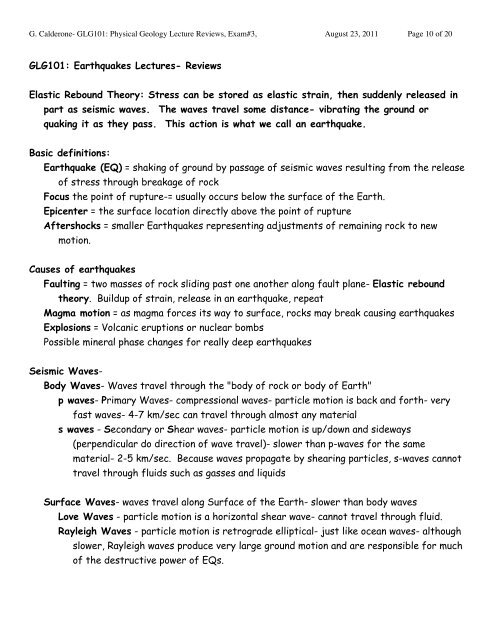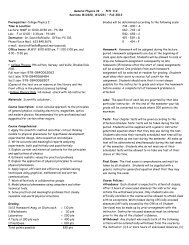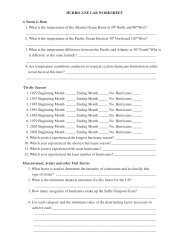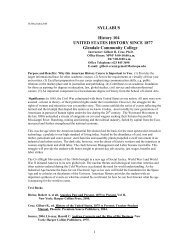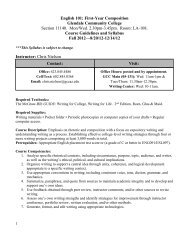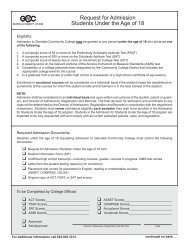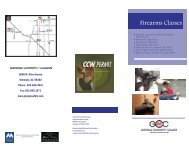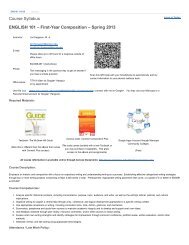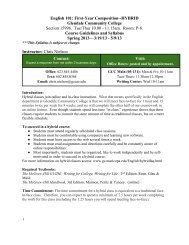GLG101: Physical Geology Lecture Outlines for Exam#3:
GLG101: Physical Geology Lecture Outlines for Exam#3:
GLG101: Physical Geology Lecture Outlines for Exam#3:
You also want an ePaper? Increase the reach of your titles
YUMPU automatically turns print PDFs into web optimized ePapers that Google loves.
G. Calderone- <strong>GLG101</strong>: <strong>Physical</strong> <strong>Geology</strong> <strong>Lecture</strong> Reviews, <strong>Exam#3</strong>, August 23, 2011 Page 10 of 20<strong>GLG101</strong>: Earthquakes <strong>Lecture</strong>s- ReviewsElastic Rebound Theory: Stress can be stored as elastic strain, then suddenly released inpart as seismic waves. The waves travel some distance- vibrating the ground orquaking it as they pass. This action is what we call an earthquake.Basic definitions:Earthquake (EQ) = shaking of ground by passage of seismic waves resulting from the releaseof stress through breakage of rockFocus the point of rupture-= usually occurs below the surface of the Earth.Epicenter = the surface location directly above the point of ruptureAftershocks = smaller Earthquakes representing adjustments of remaining rock to newmotion.Causes of earthquakesFaulting = two masses of rock sliding past one another along fault plane- Elastic reboundtheory. Buildup of strain, release in an earthquake, repeatMagma motion = as magma <strong>for</strong>ces its way to surface, rocks may break causing earthquakesExplosions = Volcanic eruptions or nuclear bombsPossible mineral phase changes <strong>for</strong> really deep earthquakesSeismic Waves-Body Waves- Waves travel through the "body of rock or body of Earth"p waves- Primary Waves- compressional waves- particle motion is back and <strong>for</strong>th- veryfast waves- 4-7 km/sec can travel through almost any materials waves - Secondary or Shear waves- particle motion is up/down and sideways(perpendicular do direction of wave travel)- slower than p-waves <strong>for</strong> the samematerial- 2-5 km/sec. Because waves propagate by shearing particles, s-waves cannottravel through fluids such as gasses and liquidsSurface Waves- waves travel along Surface of the Earth- slower than body wavesLove Waves - particle motion is a horizontal shear wave- cannot travel through fluid.Rayleigh Waves - particle motion is retrograde elliptical- just like ocean waves- althoughslower, Rayleigh waves produce very large ground motion and are responsible <strong>for</strong> muchof the destructive power of EQs.


